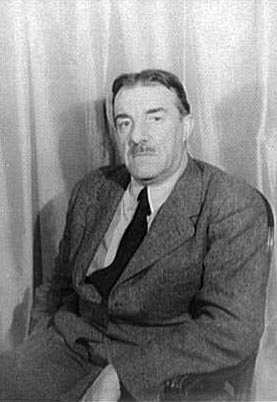
Fernand Léger
Fernand Léger was a French painter, sculptor, and filmmaker known for his distinctive Cubism style.
Biography of Fernand Léger
Born in rural Normandy in 1881, Fernand Léger was raised by his family with the expectation that he would pursue a practical trade, following in the footsteps of his father, a cattle dealer. Despite not being initially encouraged to become an artist, Léger displayed drawing talent, and he was sent to apprentice with an architect in Caen.
Following the completion of his military training in 1903, he furthered his studies in Paris at the École des Arts Décoratifs and Académie Julian. To support himself, Léger engaged in architectural drawings and the retouching of photographs. His early paintings from this period reveal influences from Impressionism, but a pivotal moment occurred in 1907 when he attended the retrospective of Paul Cézanne at the Salon d'Automne, altering the trajectory of his artistic direction.
In 1909, Fernand Léger relocated to Montparnasse and produced early Cubist works, including "Le Compotier sur la Table" (1909). Despite encounters with Georges Braque, Pablo Picasso, and Henri Rousseau, his closest companions were the writers Guillaume Apollinaire and Blaise Cendrars. At the 1911 Salon des Indépendants, Léger showcased paintings that established him as a significant Cubist artist, notably "Nudes in the Forest" (1909-1910).
The artist continued exhibiting at the Indépendants and Salon d'Automne until he enlisted in 1914. After being gassed at Verdun in 1916, he returned with a head injury. His wartime experiences intensified his fascination with the human figure. He asserted that the "crudeness, variety, humor, and downright perfection of certain men around" during the war made him abandon the abstraction of 1912-13. The precise sense of utilitarian reality and its application amid the life-and-death drama inspired him to paint in slang with all its color and mobility.
In 1920, Fernand Léger married Jeanne-Augustine Lohy and forged a lasting friendship with Le Corbusier. He closely associated himself with the circle around Le Corbusier, sharing an interest in machinery and the portrayal of speed and motion. The period marked a shift in his style towards clean, figurative elements and a departure from abstraction, exemplified by the 1921 work "Three Women (Le Grand Déjeuner)." Some of his works from this time also exhibit clear influences from Futurism.
Throughout the 1920s, Léger ventured into book illustration, designed sets and costumes for ballet and theater performances, and directed the film "Ballet Mechanique" in 1924. In the same year, he co-founded a free school for modern art in Paris with Amédée Ozenfant, where he taught alongside Marie Laurencin and Aleksandra Ekster.
Léger's artistic focus during the 1920s and 1930s reflected a keen interest in social equality. Associated with the loose Interwar Classicism movement, the artist initiated several painting series known as "cycles," depicting various groups of men in action, such as construction workers, cyclists, and divers. These works often combined his fascination with depicting technology and machinery with a growing emphasis on the human form, exemplified in the "Constructor" series.
The artist made his first visit to the USA in 1931 and later relocated to New York City to escape World War II. During 1940-45, he exerted influence on many painters associated with the New York School and conducted a lecture series at Yale University titled "Color in Architecture." Upon returning to France in 1945, he joined the Communist Party. Following his wife's death in 1950, Léger remarried Nadia Khodossevitch in 1952.
In his later years, Fernand Léger developed a heightened interest in large-scale public art. Before his death, he engaged in the creation of mosaics, stained glass windows, and murals in both Europe and South America. The artist passed away at his residence in Gif-sur-Yvette, France, in 1955.
Fernand Léger's Art Style
Fernand Léger, known for his reputation as a Cubist, had a style that varied considerably over the decades. His artistic approach fluctuated between figuration and abstraction, drawing influence from diverse sources. Léger engaged in various media, such as paint, ceramic, film, theater and dance sets, glass, print, and book arts. Despite the variability in his style, his artwork consistently featured graphic elements, emphasizing primary colors, patterns, and bold forms.
Embracing the Cubist principle of breaking objects into geometric shapes, Léger maintained an interest in portraying the illusion of three-dimensionality. His distinctive form of Cubism set him apart through a focus on cylindrical shapes and the incorporation of robot-like human figures, conveying a sense of harmony between humans and machines.
Influenced by the disorder of urban spaces and his fascination with vibrant primary colors, the artist aimed to convey the noise, dynamism, and speed of emerging technology and machinery. This often led to a depiction of movement in his paintings, capturing the optimism prevalent in the pre-World War I era.
Years:
Born in 1881
Country:
France, Argentan, Orne, Lower Normandy
Gallery:
Galleria d'Arte Maggiore g.am.
Van de Weghe
Landau Fine Art
Helly Nahmad Gallery